In the tapestry of interior design, one element often overlooked yet profoundly transformative is the rug. While a rug’s primary purpose is utilitarian, providing comfort underfoot and defining a space, there exists a realm where these functional pieces transcend mere floor coverings.
These aren’t your standard floor adornments; they are meticulously crafted masterpieces, each thread woven with precision and care. Join us on a journey through the intricate tapestries of the most expensive rugs ever sold, where design meets decadence, and where underfoot luxury becomes a statement of affluence and discernment.
Whether you’re an interior design enthusiast, an art aficionado, or simply curious about the heights of extravagance in home decor, this exploration promises to unravel the stories woven into the fibers of the most exclusive rugs in the world.
8. Rothschild Tabriz Medallion Carpet
Year Made: 16th century
Origin: Persia
Size: 20 ft. length

The Rothschild Tabriz Medallion Carpet, an embodiment of Persian artistry and historical significance, emerged from 16th-century Persia, boasting a length of 20 feet and holding a value of $2.4 million. Its attribution to the esteemed Tabriz weaving tradition underscores its exceptional quality and cultural resonance.
Adorned with intricate medallion designs and elaborate motifs typical of Tabriz carpets, this masterpiece exemplifies the consummate skill and meticulous craftsmanship of Persian carpet makers during that era.
Did You Know?
Beyond its aesthetic allure, this carpet serves as a symbol of Persia’s rich cultural heritage, representing the pinnacle of Persian weaving artistry.
7. Magnificent Louis XV Savonnerie Carpet
Year Made: Between 1735 and 1750
Origin: France
Size: 18 ft. 8 in. x 19 ft. 10 in.
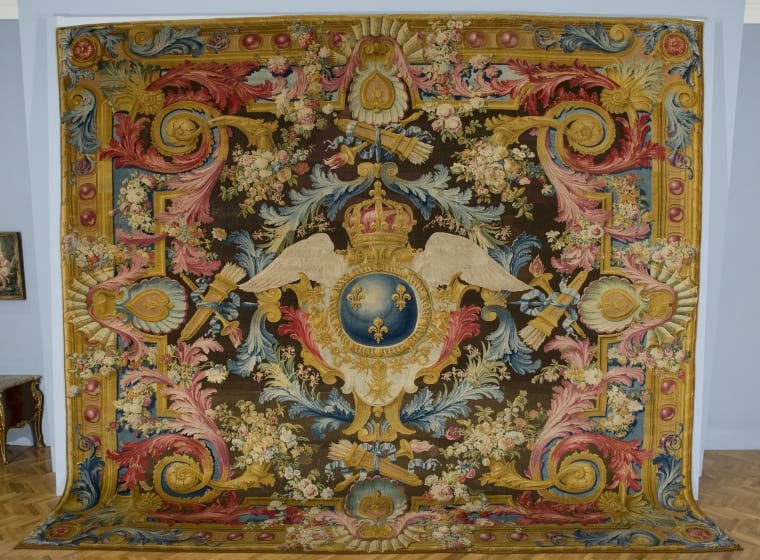
Hailing from the renowned Savonnerie workshop, this carpet epitomizes the opulence and sophistication of French royal taste during the Louis XV era. The Savonnerie carpets were highly coveted, created exclusively for royalty and aristocrats, symbolizing luxury and prestige.
The Magnificent Louis XV Savonnerie Carpet, crafted between 1735 and 1750 in France, stands as a testament to exquisite artisanship despite its immense size of 18 ft. 8 in. x 19 ft. 10 in. Despite its colossal dimensions, this carpet’s valuation reflects its rarity, historical significance, and the unparalleled craftsmanship involved in its creation.
Did You Know?
Surviving Savonnerie carpets from this era are rare due to their delicate nature and historical significance. Their survival through centuries speaks to their exceptional quality and craftsmanship.
6. Silk Isfahan Rug
Year Made: 17th century
Origin: Persia
Size: 7 ft. 5 in. x 5 ft. 7 in.

Notable for its use of silk, the Silk Isfahan Rug stands out for its fine quality and intricate design. Isfahan, renowned for its rug-making tradition, produced some of the most luxurious and finely woven carpets during the Safavid era.
This particular rug, valued at $4.45 million, is a reflection of the wealth and sophistication of Persian society during the 17th century. Its use of silk threads, along with meticulous knotting and detailed designs, showcases the exceptional skill of Persian artisans.
Did You Know?
The design of the Silk Isfahan Rug typically features elaborate floral patterns, arabesques, and intricate medallions, highlighting the Persian aesthetic and artistic heritage.
5. Mughal ‘Star Lattice’ Carpet
Year Made: 18th century
Origin: North India
Size: 12 ft. 9 in. x 13 ft. 6 in.
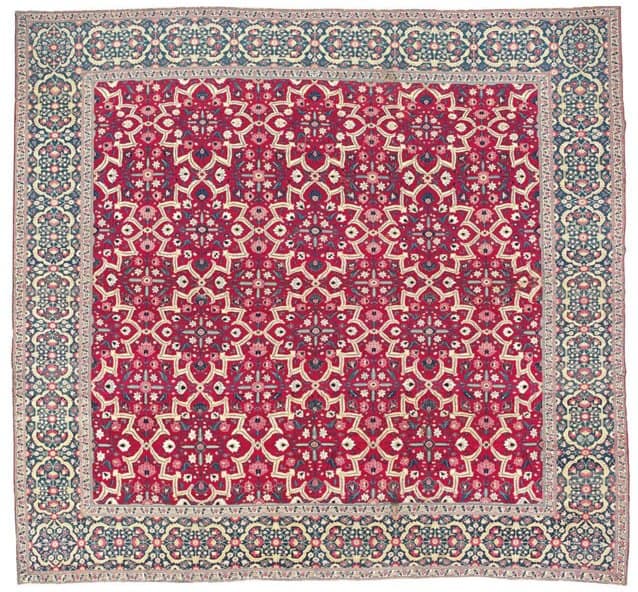
The Mughal ‘Star Lattice’ Carpet, originating from North India in the 18th century, stands as a remarkable testament to the artistry and craftsmanship of the Mughal era despite its considerable size of 12ft 9in. x 13ft. 6in.
Its design, known as the ‘Star Lattice,’ features an intricate pattern of interlacing stars and floral motifs, meticulously woven into the fabric. The carpet exemplifies the sophisticated weaving techniques and intricate designs that characterized Mughal carpets.
Did You Know?
This carpet reflects the fusion of Persian and Indian design influences prevalent during the Mughal era. The intricate designs and vibrant colors highlight the cultural synthesis that defined Mughal art.
4. The Pearl Carpet of Baroda
Year Made: 19th century
Origin: Baroda, India
Size: 5 ft. 8 in. x 8 ft. 8 in.
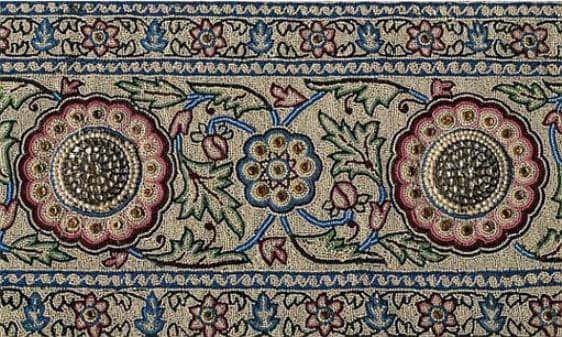
Valued at $5.5 million, the Pearl Carpet of Baroda exemplifies the fusion of artistic mastery and luxury. Its historical provenance, association with Indian royalty and the extraordinary use of precious gemstones and pearls elevate its status as a priceless cultural artifact.
Embedded with thousands of precious pearls, this magnificent carpet showcases exceptional craftsmanship and intricate design. Commissioned in the 19th century for the Maharaja of Baroda, it was intended for ceremonial use in religious and important events, symbolizing wealth, status, and the magnificence of the Baroda royal court.
Did You Know?
This opulent carpet is crafted from silk and features an intricate garden design. What truly distinguishes it is the use of thousands of seed pearls, diamonds, emeralds, sapphires, and rubies meticulously embroidered onto the fabric.
3. Kirman Vase Rug
Year Made: 17th century
Origin: Persia
Size: 8 ft. 3 in. x 5 ft.

The Kirman Vase rug achieved a significant milestone in rug sales, holding the record for the most expensive rug sold until its sale at Christie’s Auction in 2010 for $9.6 million. Its vibrant leaf pattern in bright blue hues, originating from Iran, captivated collectors and enthusiasts alike.
This rug, with its distinct sickle-leaf motif and exceptionally preserved jewel tones, stands as a prized piece not only in the world of rugs but also in the realm of Islamic art. Its sale at such a staggering price also marked it as possibly the most expensive piece of Islamic art ever sold at auction, solidifying its historical and cultural significance.
Did You Know?
The rug’s strong ties to Islamic history add another layer of allure, resonating with the rich artistic heritage of the region.
2 . Comtesse de Behague Vase Carpet
Year Made: Mid-17th century
Origin: South East Persia
Size: 11 ft. 1 in. x 5 ft.
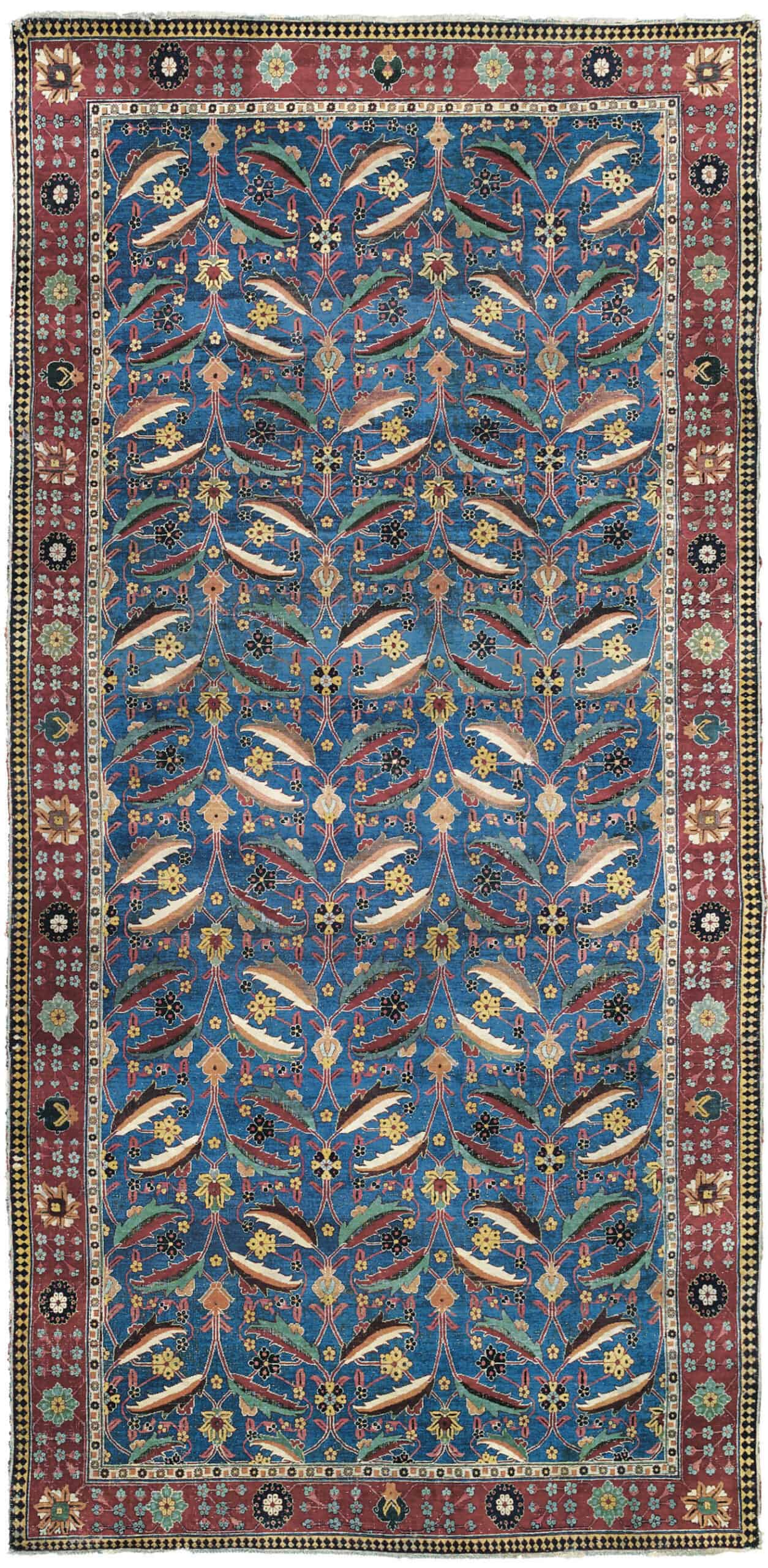
The Comtesse de Behague Vase Carpet is an exquisite artifact crafted in the mid-17th century in Southeast Persia. In 2010, it was sold for a staggering $10 million, a testament to its rarity and historical value. This sale highlighted the continued demand for ancient Persian carpets and the willingness of collectors to invest significantly in such cultural treasures.
Its origin in Southeast Persia, an area known for its rich tradition of carpet weaving, further adds to its historical and cultural significance. The size, while not exceptionally large, emphasizes the intricacy of the craftsmanship packed into its dimensions, contributing to its esteemed value in the world of art and antiquities.
Did You Know?
Named after the Comtesse de Behague, a prominent figure in French high society and a patron of the arts, the rug possibly had ties to her collection or ownership at some point, hence bearing her name.
1. Clark Sickle-Leaf Carpet
Year Made: 17th century
Origin: Persia
Size: 8 ft. x 6 ft.
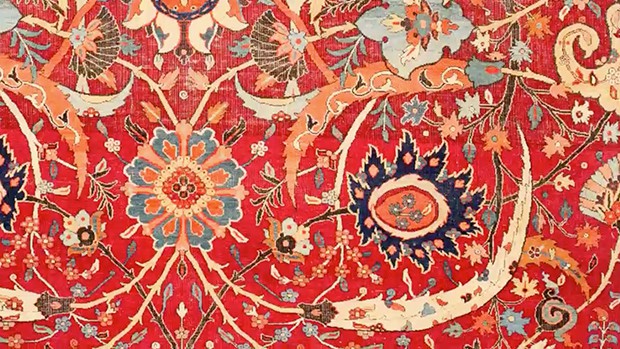
The Clark Sickle-Leaf Carpet stands as an emblem of opulence and historical significance, boldly claiming the title of the most expensive rug ever sold at a staggering $34 million. Crafted in the 17th century in Persia, its exquisite artistry and intricate design transcend time, reflecting the masterful craftsmanship of its era.
This masterpiece represents more than just a luxurious floor covering; it encapsulates a rich historical background. Its origin in Persia, renowned for its renowned carpet-making tradition, underscores the cultural and artistic prowess of the region during that period. The size, a mere 8 ft. x 6 ft., contrasts with its monumental value, emphasizing the rarity and exclusivity of such intricate artifacts.
Persian rugs hold a revered place in Persian culture. They were historically used not just as floor coverings but also as valuable assets, often gifted to royalty and dignitaries, symbolizing wealth and status.
Did You Know?
Its design features an array of sickle-shaped leaves on a red background, showcasing meticulous craftsmanship and artistic precision. The complexity of the design highlights the skill and artistry of the rug makers of that era.
